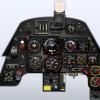Hypoxia...
-
Members Online
- 1980Mooney
- Lincoln
- DonMuncy
- Ragsf15e
- kortopates
- IvanP
- chrisburdzy98
- redbaron1982
- TCC
- M20TN_Driver
- Yannis
- Rick Junkin
- Utah20Gflyer
- Geoff
- stlcg
- ta2too
- Rogerg
- Parker_Woodruff
- Falcon Man
- pirate
- Denis Mexted
- TaildraggerPilot
- outermarker
- LANCECASPER
- SKI
- DXB
- exM20K
- Justin Schmidt
- Immelman
- Robm
- Nico1
- atpdave
- Jetdriver
- Igor_U
- hazek
- AndreiC
- JoMo
- ProtoFly
- dzeleski
- EricJ
- CaptainBen
- MatthiasArnold
- Jeremy K
- daytonabch04
- Skyland
- Wingover
- Rocket_Driver
- donkaye, MCFI
- 201Mooniac
- 201er
- PT20J
- Probst Aircraft Tooling
- Flyler
- Andy95W


Recommended Posts
Join the conversation
You can post now and register later. If you have an account, sign in now to post with your account.